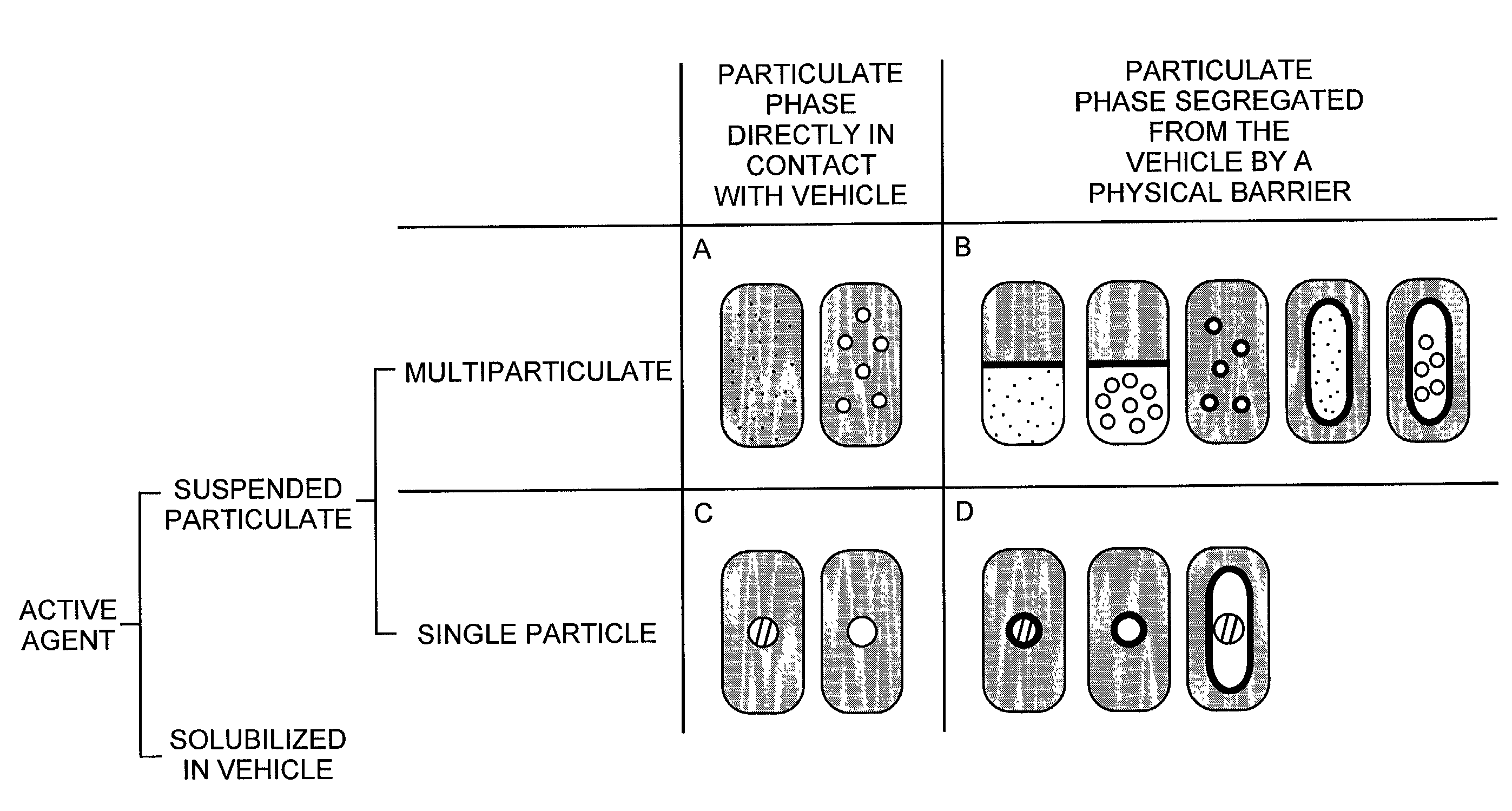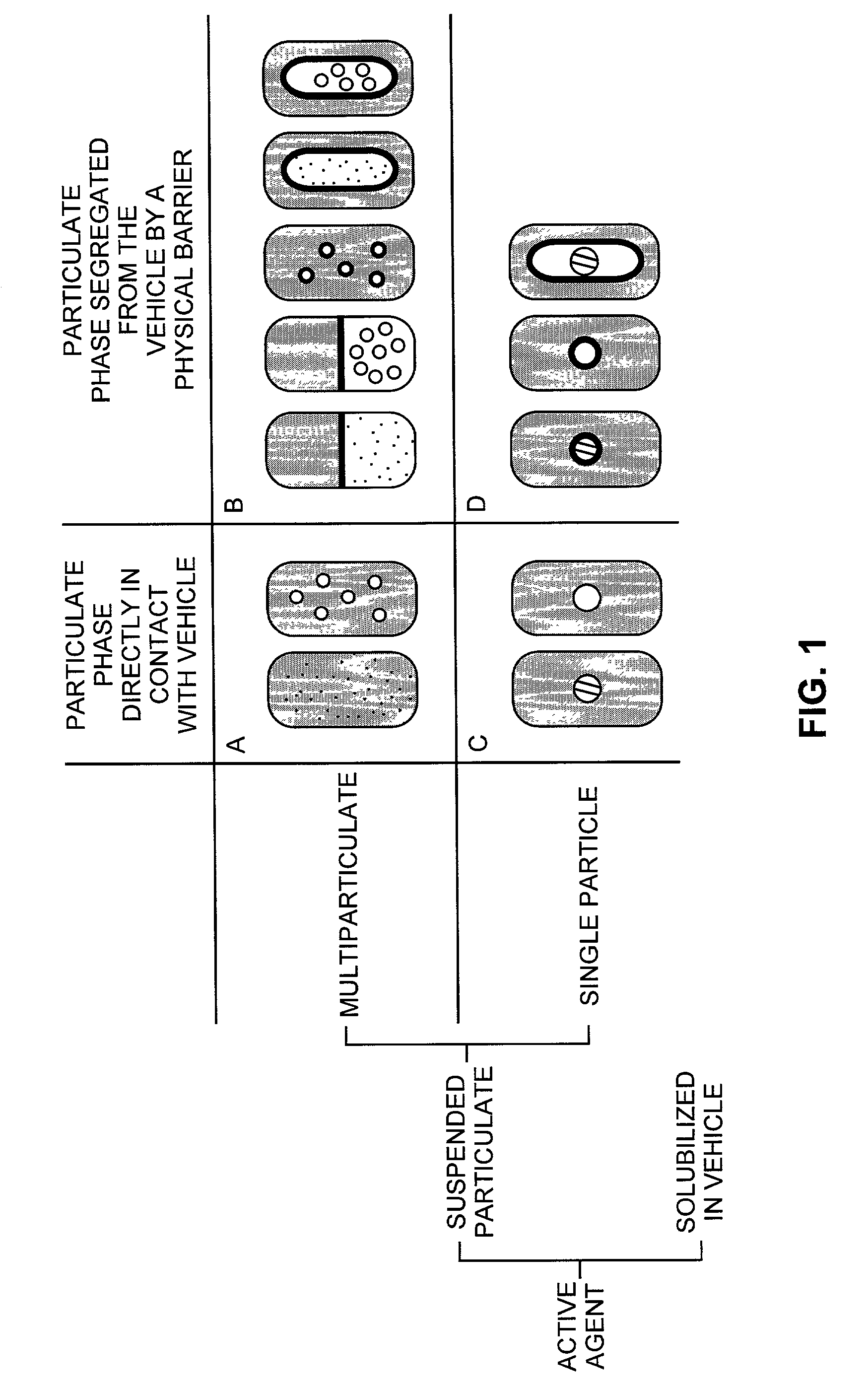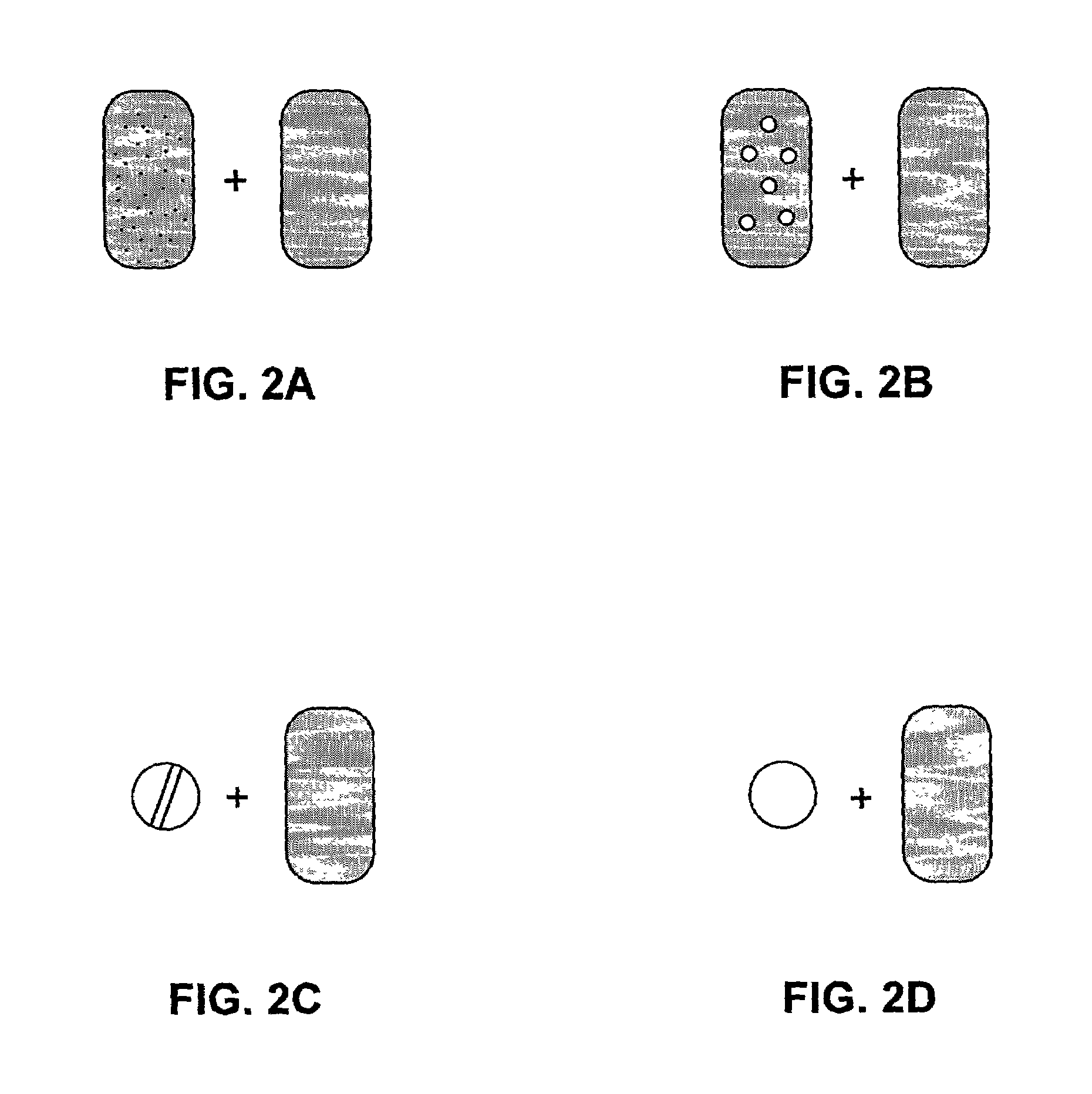Pharmaceutical formulations and systems for improved absorption and multistage release of active agents
a technology of pharmaceutical formulations and active agents, applied in the field of drug delivery, can solve the problems of limited work in the field of pharmaceutical formulations and drug delivery, low bioavailability and absorption, and particularly problematic in providing therapeutically effective formulations
- Summary
- Abstract
- Description
- Claims
- Application Information
AI Technical Summary
Benefits of technology
Problems solved by technology
Method used
Image
Examples
examples 1-4
[0313]Pharmaceutical suspension formulations containing isotretinoin were prepared containing the components indicated below.
[0314]
Composition(mg)Example 1Isotretinoin40Soybean Oil200Maisine ® 35-1100Lutrol ® F68100Example 2Isotretinoin40Labrafil ® M2125CS200Cremophor ® RH40200Vitamin E TPGS100Example 3Isotretinoin40Soybean Oil100Labrafil ® M2125CS100Cremophor ® RH40200Lutrol ® F68100Example 4Isotretinoin40Miglyol ® 812200Imwitor ® 742200Vitamin E TPGS400PEG 3350100
[0315]In Example 1, the formulation was prepared by admixing soybean oil and Maisine 35-1 and warming the mixture to about 40-50° C. to provide a liquid. Any antioxidant, for example, butylated hydroxyanisole (BHA) or butylated hydroxytoluene (BHT), in an appropriate amount, can be added to the mixture by further raising the temperature of the liquid to about 70° C. and using an appropriate mixer to facilitate dissolution of the antioxidant. The solution of the antioxidant may be cooled to about 40-50° C. or maintained at...
examples 5-11
[0319]Pharmaceutical suspension formulations containing isotretinoin are prepared containing the components indicated below, using the procedures of Examples 1-4.
[0320]
Composition(mg)Example 5Isotretinoin80Soybean Oil200Maisine ® 35-1100Lutrol ® F68100Sodium Lauryl Sulfate20Example 6Isotretinoin100Soybean Oil200Maisine ® 35-1100Lutrol ® F68100Kollidon ® K30100Example 7Isotretinoin40Maisine ® 35-1400Gelucire ® 44 / 14200Lutrol ® F68100Example 8Isotretinoin40Maisine ® 35-1150Cremophor ® RH40150Lutrol ® F68100Example 9Isotretinoin40Labrafil ® M2125CS200Cremophor ® RH40200Lutrol ® F68100Example 10Isotretinoin40Labrafil ® M1944CS150Cremophor ® RH40100Gelucire ® 53 / 13150Example 11Isotretinoin40Glyceryl Cocoate100Lauroglycol FCC200Vitamin E TPGS350PEG 3350150
example 12
[0321]Preparation of dosage forms containing the formulations of Examples 1-11, containing at least 20% solubilized active agent:
[0322]The suspension formulations of Examples 1-11 can be processed to provide pharmaceutically acceptable dosage forms containing a sufficient amount of isotretinoin so that a therapeutically effective level of isotretinoin can be achieved in the treated subject upon administration of the dosage form. The compositions can be included in a unit dosage form to provide 5-100 mg of isotretinoin per unit dosage form. A preferred dosage form is a capsule encapsulating the formulation. The capsule shell can be made of any conventional capsule material, e.g., gelatin, starch, or cellulose. The preferred capsule is a soft gelatin capsule. The suspension formulation can be filled into the capsule using conventional filling machines. If a two-piece hard gelatin capsule is used, the filled capsule can be further banded or spray sealed with a sealing solution to preve...
PUM
| Property | Measurement | Unit |
|---|---|---|
| Temperature | aaaaa | aaaaa |
| Fraction | aaaaa | aaaaa |
| Fraction | aaaaa | aaaaa |
Abstract
Description
Claims
Application Information
 Login to View More
Login to View More - R&D
- Intellectual Property
- Life Sciences
- Materials
- Tech Scout
- Unparalleled Data Quality
- Higher Quality Content
- 60% Fewer Hallucinations
Browse by: Latest US Patents, China's latest patents, Technical Efficacy Thesaurus, Application Domain, Technology Topic, Popular Technical Reports.
© 2025 PatSnap. All rights reserved.Legal|Privacy policy|Modern Slavery Act Transparency Statement|Sitemap|About US| Contact US: help@patsnap.com



